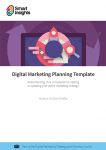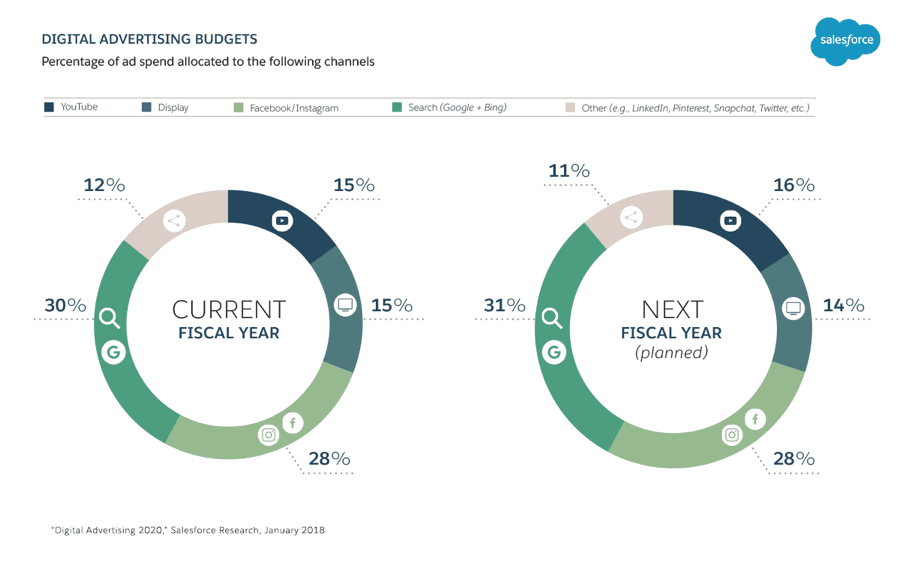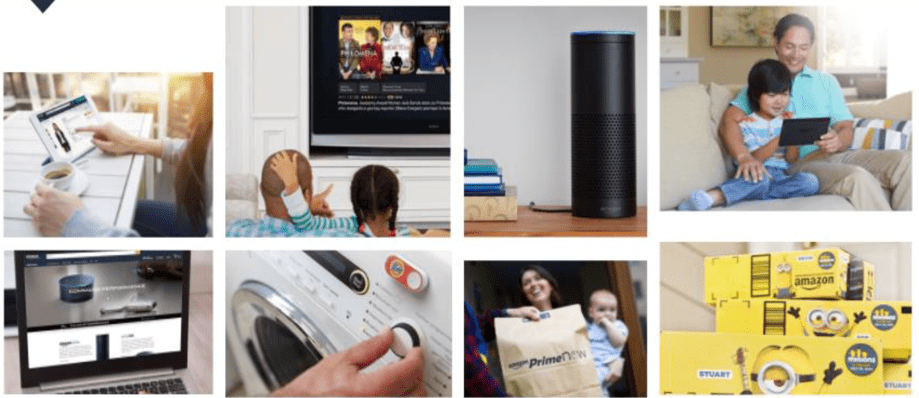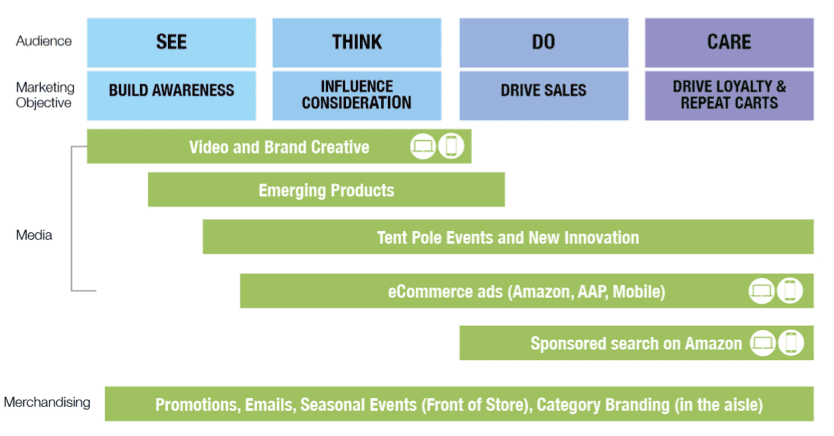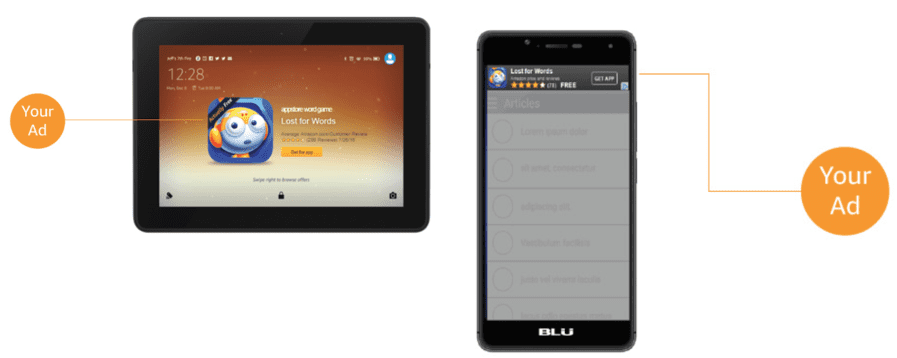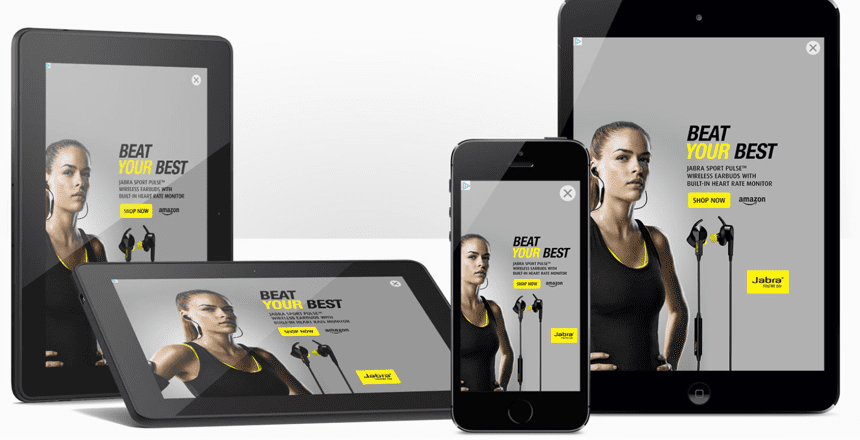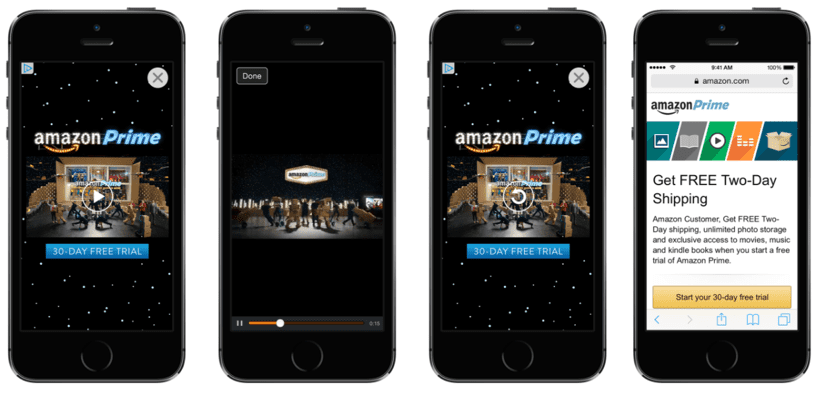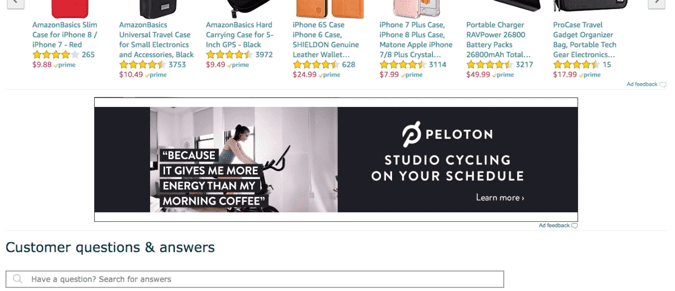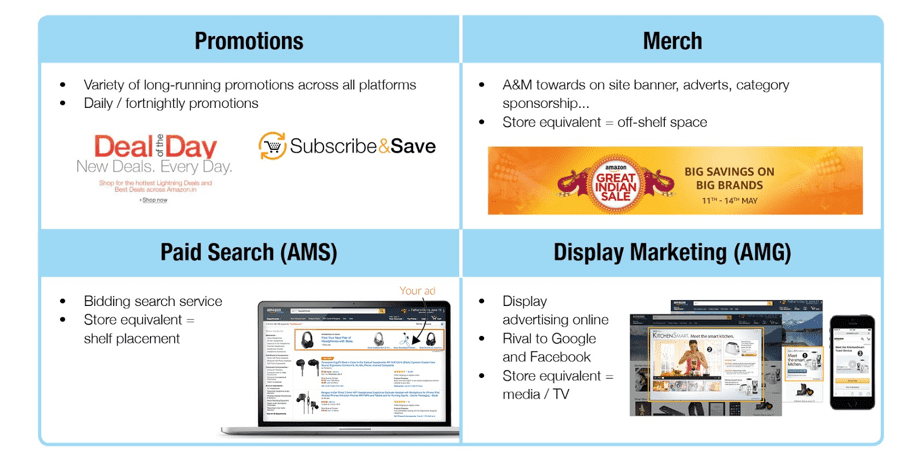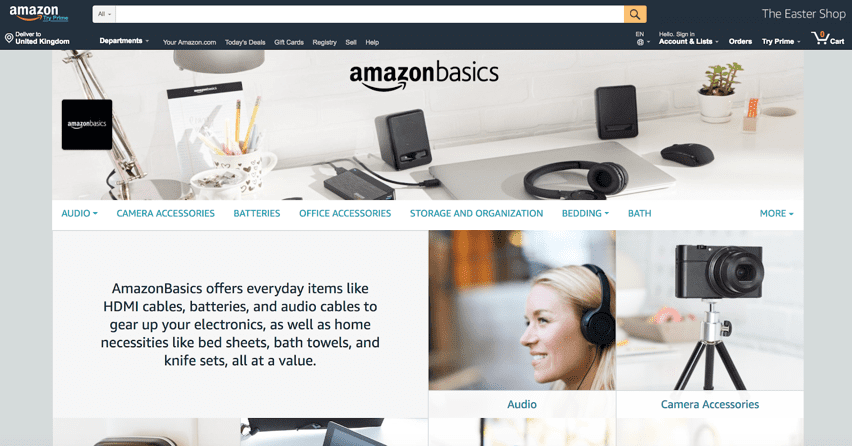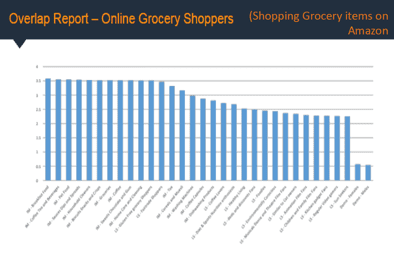Key steps and best practices to win with Amazon – digital advertising
In the previous post in this series (key steps and best practises to win with Amazon – Ecommerce) we looked at the exponential growth of Amazon and the share of mind it has gained globally over the last ten years, surpassing many older, more established brands with an unwavering focus on innovation and the customer experience.
Amazon’s drive to become the ‘everything store’ has led the company to move into many new and different areas, including technology, original content and web services (BBC iPlayer and even Netflix run on Amazon!). Whilst Amazon is more widely known as an ecommerce platform, the company’s move into media and its burgeoning advertising business is starting to cause tremors within the industry, with leaders including Martin Sorrell of WPP Group predicting that Amazon is the biggest threat to the Facebook/ Google duopoly.
Some analysts suggest that Amazon’s revenues in digital advertising were more than $1 billion (£780m) in 2016, around $2.5 billion in 2017 and could rise to nearly $6 billion in 2018. The global digital duopoly could be under threat which could ultimately bring opportunities for digital marketers.
Digital advertising opportunities and best practices
Brand marketers can no longer ignore Amazon. It’s the third most visited site in the UK after Google and Facebook and it’s predicted that over 40% of UK households will have an Echo by the end of 2018. Amazon have embedded themselves into the daily lives of our consumers and we’re starting to seeing an increasing number of touchpoints, from smart devices such as the Echo, to TV services and Dash buttons:
The Amazon network can be seen as a 3600 ecosystem, with advertising opportunities present across many different areas including:
- Connected devices, e.g. Fire tablet, Kindle eReader, Fire TV
- Amazon’s Fresh and Pantry platforms
- Owned and operated, e.g. Amazon, IMDb, Zappos
- Amazon offline, e.g. delivery trucks and packaging
- Original content sponsorships, e.g. The Grand Tour, House of Cards
- Amazon Advertising Platform across web and apps
In combination with ecommerce, Amazon’s omnipresence means that they have the ability to influence consumer decisions at different stages and last year GeoMarketing reported that 82% of Echo owners subscribe to Amazon Prime, an example of how Amazon is becoming more present in every part of the consumer journey:
The figure above illustrates how we can take Avinash Kaushik’s See – Think – Do – Care framework and overlay the different media options in order to demonstrate the role Amazon plays at different stages, from building brand awareness and consideration, through to driving sales and growing loyalty and repeat purchases. Our role as marketers is to align our campaign objectives with the right channels and media that Amazon offer and take advantage with any synergies across the Amazon ecosystem (e.g. ecommerce and paid search).
Amazon’s digital advertising options
So what does advertising with Amazon look like? Here’s a snapshot of some of the different formats and ways of advertising that Amazon provides:
1. Desktop and mobile web display ads
These include standard sizes for display on Amazon and other sites around the web, including leaderboards, skyscrapers, rectangles and billboards:
2. Mobile banner ads
Mobile offers display advertisers the ability to reach and target mobile users on third-party mobile applications on Android, Fire Tablet and iOS platforms. Marketers should be aware of Amazon’s creative guidelines and Acceptance Policy:
3. Mobile interstitial ads
Amazon offers app developers the ability to integrate full-screen interstitial advertisements inside their apps using the Mobile Ads API:
These ad units do not appear on Amazon Mobile Shopping and always include a prominent close button:
4. Video ads (mobile and desktop)
Advertisers can serve 5+ second in-stream or out-stream video ads in multiple video formats (including MP4, WebM, or FLV) using the Amazon Ad Platform:
Digital advertising checklist for success
With all the above in mind, below is a checklist of considerations to make the most of digital advertising with Amazon:
1. Build Amazon into your 3600 brief
Plan up front where Amazon will be used as part of your campaign’s media mix:
- To drive top of funnel brand awareness
- To drive lower funnel conversions and sales
- To extend existing reach of a campaign, i.e. in addition to other platforms, e.g. Facebook, Instagram, Twitter
In partnership with ecommerce, there are four levers marketers can take advantage of to drive sales and build visibility:
The goal for marketers will be to build a holistic plan utilizing each of these four levers that aligns with the business’s overarching marketing objectives.
2. Define KPIs from the outset
For many marketers it may be the first time they have worked with Amazon. As a result, be clear on expectations and what you want to achieve with Amazon from the very start and set realistic KPIs. Anecdotally, Amazon is performing on par – and sometimes better – than equivalent media on other channels, including Facebook, Google and Twitter, so it’s worth using past results with other platforms as a benchmark.
Advertising on Amazon is very similar to advertising on other platforms so there are no unique KPIs to keep in mind. Many of the same best practices apply however it’s still worth keeping the following in mind before you start campaign planning:
- Determine goals – outline which performance metrics are most important for the campaign’s overall performance, linked to overall business objectives, e.g.:
- Business objectives, e.g.:
- Increase profit growth by x%
- Increase market share by y%
- Marketing objectives, e.g.:
- Increase sales by x%
- Increase brand recognition by y%;
- Communication objectives, e.g.:
- Increase frequency of consumption by x%
- Increase household penetration by y%
- Increase association with platform/ moment
- Audit current campaigns – once goals and KPIs are set, audit existing campaign structures on other platforms to identify any gaps and opportunities that could be exploited using Amazon
- Fill campaign gaps – evaluate performance of other campaigns and look to build on any failures or success and select a campaign structure that best fits the brand’s goals
- Compare results – once your first campaigns have launched and you have some initial performance data, take the opportunity to analyze results, both Amazon vs. Amazon (if more than one campaign) or Amazon vs. Google/ Facebook/ Twitter etc.
3. Build a custom brand page
The creation of a custom brand page can give you an opportunity to develop an immersive shopping experience for consumers, allowing them to really get under the skin of what the brand is about by utilizing video content, a detailed product overview, custom navigation, social media links and much more. These pages act as content/ product hubs where traffic can be directed, driven by paid media.
4. Leverage Amazon’s wealth of data
Even compared to Facebook and Google, no one gets close to Amazon with the richness of data they have on real consumption patterns of consumers. As Martin Sorrell points out:
“Amazon has a treasure trove of data on what consumers actually end up buying. Its 2017 acquisition of Whole Foods will add another huge tranche of data about shoppers’ habits in bricks-and-mortar stores.
Amazon gives marketers an opportunity to leverage data to discover the best possible audience for a campaign and ultimately build a compelling picture of their target consumers:
Every campaign should start with an audience building deep-dive by demographic, lifestyle, categories and other factors, and this should be continually optimized throughout the campaign based on further audience data.
5. Maximise media-to-shelf opportunities
In addition to the top-of-funnel brand awareness element they’ve been developing, it’s fair to say that Amazon’s heartland is still very much in the lower funnel, conversion driving space. This is where most of Amazon’s data really comes in to play and can be used to develop very efficient shopper journeys that take users through to conversion.
Whilst shoppable marketing is now common across many platforms, Amazon’s data and broader ecosystem give it an edge by enabling marketers to maximize conversions by placing ‘shop now’ ads in contextually relevant places and creating a frictionless hand-off to the ecommerce platform, to either a custom brand page or an optimized landing page:
